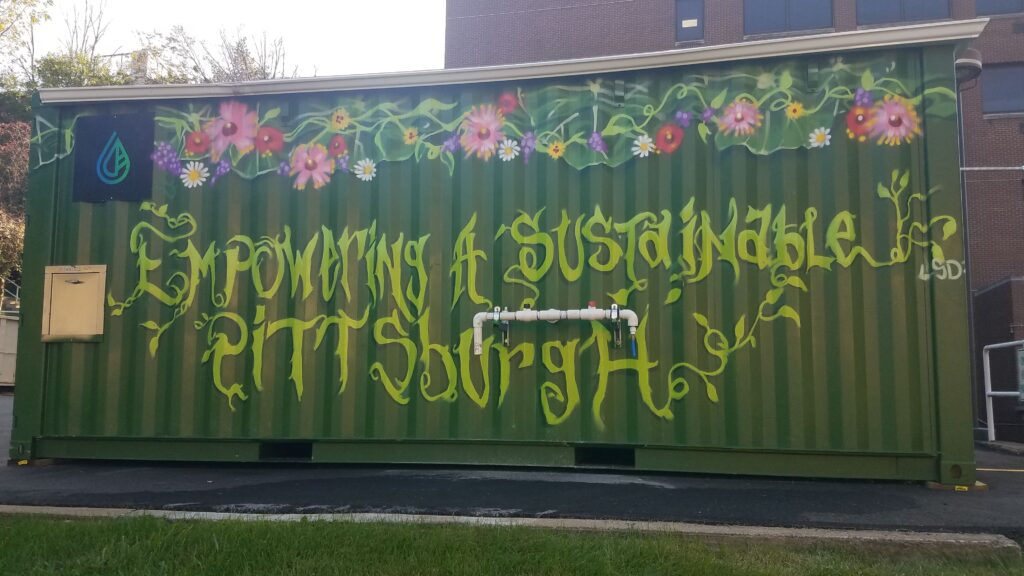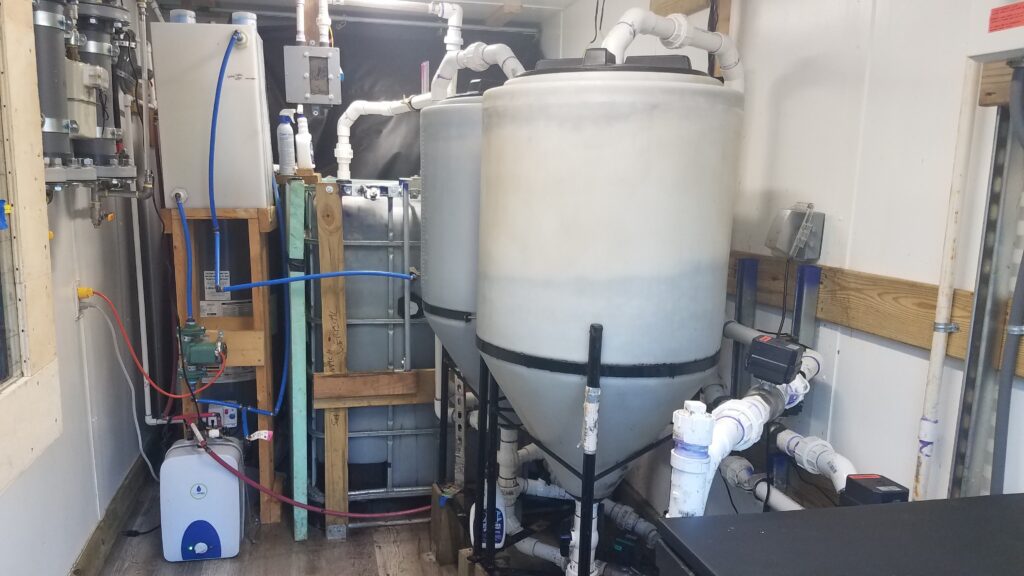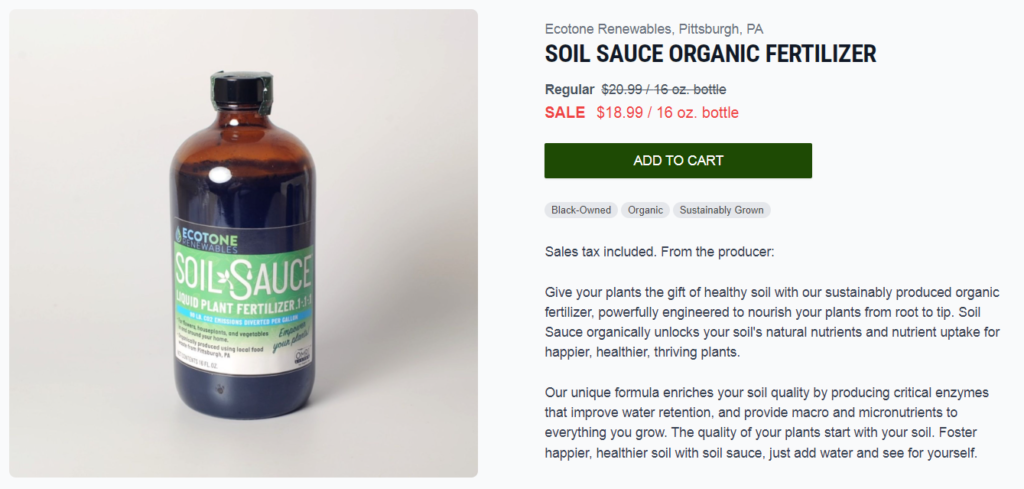I’ve written quite a bit on this blog about Community Supported Agriculture (CSA) programs and my complex relationship with them. [1] The relationship is made complex mostly through my own laziness / limited time to cook what I receive each week, resulting in more food waste than I would like. Aside from that, I love the concept of eating local, in-season, responsibly-produced foods, and supporting a more robust food economy in the region. [2] Fortunately, around this time last year, I discovered that a local CSA called Harvie now addresses my primary concerns by allowing me to order as much (or as little) as I would like in my weekly delivery, including prepared foods for when I really just don’t have the time. [3] Thanks to Harvie, I am thrilled that I don’t have to reconcile my philosophical leanings and the reality of my hectic life – at least in this one instance.
An additional perk of my CSA subscription level is that I have access to tours of local farms and events – when I actually have the time, that is. I attended one such event earlier this month, but it was not at a farm, and it was not focused on food production. Instead, I was able to see and learn about efforts being done to create a fertilizer product from food waste at one of several anaerobic digesters deployed in the Pittsburgh area by the company Ecotone Renewables. [4] I tend to avoid highlighting specific companies on this blog, with the exception of instances when I come across something particularly novel or interesting, and this little field trip of mine was absolutely blog-worthy.
Anaerobic Composting
Traditional backyard composting (the kind that you have to turn) makes use of oxygen to feed the microorganisms that break down the organic materials in the compost pile and expel carbon dioxide in the process. Anaerobic decomposition, on the other hand, happens in sealed systems (such as landfills or waste digesters) and results in methane as the chief byproduct – one of the concerns frequently raised in relation to landfilling organic matter. A small number of landfills in the US are making use of methane recapture systems, but even in those cases, the system effectiveness is low. [5] For that reason, I have also held a bias against anaerobic compost over the years and headed to this tour prepared with a list of questions.

The Ecotone ZEUS (“Zero Emission Upcycling System”) digester I toured in the neighborhood of Bellevue was built inside a shipping container and was far more advanced than I expected. The doors were opened for the tour, but typically the only public access to the digester is an external chute for food waste, which opens into a holding tank inside. About once a week, a team member comes and manually transfers food waste from the holding tank into a grinder, where it is blended into a slurry with rainwater collected on site. This step currently relies on a human to remove any bits of plastic or metal that might have made it into the waste stream, though they are developing a robotic arm and optical sensor to automate the process.
Once the slurry is created, it is moved through a series of tanks: the dosing tank, the stomach, and the fertilizer tank. Pumping the slurry from tank to tank is not yet automated, but it can be done remotely while examining sensor readings on fill levels, pH, and temperatures in the tanks. Anaerobic composting tends to be a cooler, slower process than the aerobic equivalent, but this digester is set up so that the stomach tank is heated to 100 degrees F, speeding up the decomposition process to be about eight times faster than standard composting.
(By)Products
The energy required to heat the tank comes mostly from the process itself (addressing my first question: what happens to the methane?) One of the byproducts of this digestion is biogas, which is made up of about 70% methane, as well as hydrogen sulfide, water, and impurities that are separated and scrubbed on site. The methane produced by the process supports about 60% of the energy needs for the digester, primarily for heating the stomach. The digester is connected to the grid, which supplies electricity for the remaining 40% of its energy needs.

The scientist in me was fascinated to learn more about how the digester functioned, from microbiology to electrical engineering. The MBA in me was fascinated to learn more about the process of closing the waste loop and turning one of the resulting compost byproducts into a marketable good, all while cultivating multiple revenue streams. Indeed, Ecotone Renewables was not just on the list of Harvie-organized tours because they represented a more environmentally friendly form of waste management; they also sell a product that is available for purchase through Harvie’s CSA program – a fertilizer called Soil Sauce. [6]
Sixteen-ounce bottles of Ecotone’s Soil Sauce retail in the ballpark of $20-25, and over the course of one year, one ZEUS-scale digester can turn 12 tons of food waste into 3,000 gallons of soil sauce (which, by my math, looks like $0.5M in top-line revenue). Of course there are costs to be considered, especially in the construction of the digesters, which are full of specialized equipment, in addition to basic insulation, drywall, rainwater collection, and plumbing supplies. I learned on the tour that Ecotone has secured a financing partner, enabling them to break even on manufacturing costs at the time of deployment. And that brings us to their other revenue stream.
The ZEUS-scale digester is a suitable size for large buildings, such as hospitals, schools, or airports. The price point for hosting one, as quoted on the tour, was about $500/month if you just want it for waste disposal purposes; it’s more like $1000/month if you also want the resulting fertilizer. Their current customers have reported netting anywhere between $50 and $200 per month on waste disposal savings, as they’ve reduced their need for conventional waste hauling services and consequently decreased dumpster size or frequency of pickups for non-food waste.
Triple Bottom Line
I’m always fascinated to learn about Triple Bottom Line success stories, and Ecotone was no exception. It did not surprise me to learn that they are certified as a B-Corp, “a designation that a business is meeting high standards of verified performance, accountability, and transparency on factors from employee benefits and charitable giving to supply chain practices and input materials.” [7] Based on what I learned on the tour, this digester service model is saving customers money on waste disposal, diverting 12 tons of food waste from landfills (per year, per digester), reducing 120 tons of CO2-equivalent emissions (per year, per digester), and resulting in a product that can be fed back to plants to make them (and the soil around them) healthier.

Image credit: [8]
As of the time of the tour, there were four digesters deployed in Pittsburgh, including at a hospital and the airport, with three more under construction, and a pilot project planned at a local university. They described partnerships with food banks and other food distribution services to make use of food that ultimately couldn’t be consumed. The company is also hoping to have broader deployment across the city, describing neighborhood-level access so residents can drop off their food waste and collect Soil Sauce to take home.
I myself have not tried the Soil Sauce yet, but I was interested to learn that it’s certified organic (which apparently can be allowed for fertilizer, even if it is made with food waste that was not certified), and that their frequent (roughly monthly) testing has shown pretty standard output of nitrogen, phosphorous, and potassium levels across all digesters, no matter where they’re located or what they’re taking in. (It’s apparently the micronutrients that vary with input, and testing shows some differences between what comes out of the hospital and what comes out of the airport.)
Through all of this, their team has been working to maximize efficiency, increase automation, and develop different sized models, including a mobile version built into a horse trailer that can go to pop-up events. All of this innovation has supported more than 80 STEM interns (at high school, college, and grad school levels) making their way through the company as they study manufacturing, engineering, and climate technology. I was excited to learn that there were opportunities like this for the next generation of professionals who can be working on people/planet/profit-friendly solutions.
~
I’d like to wrap up with a reminder that I am not a spokesperson for the company, and I recognize that I may not have gotten all of my facts perfect, as I hastily scribbled notes on the tour. But, that said, I’m very happy that I got the chance to see this piece of technology up close and learn more about the science and the business model behind it. I’m also looking forward to trying out the Soil Sauce on my houseplants as we head into winter.
Have you had any experiences working with an anaerobic digester? I’d love to hear about it below.
Thanks for reading!
[1] https://radicalmoderate.online/tag/community-supported-agriculture/
[2] https://radicalmoderate.online/community-supported-agriculture-part-5/
[4] https://www.ecotonerenewables.com/
[5] https://radicalmoderate.online/real-vs-plastic-christmas-trees-part-3/
[6] https://www.ecotonerenewables.com/products/trysoilsauce
[7] https://www.bcorporation.net/en-us/certification/
0 Comments